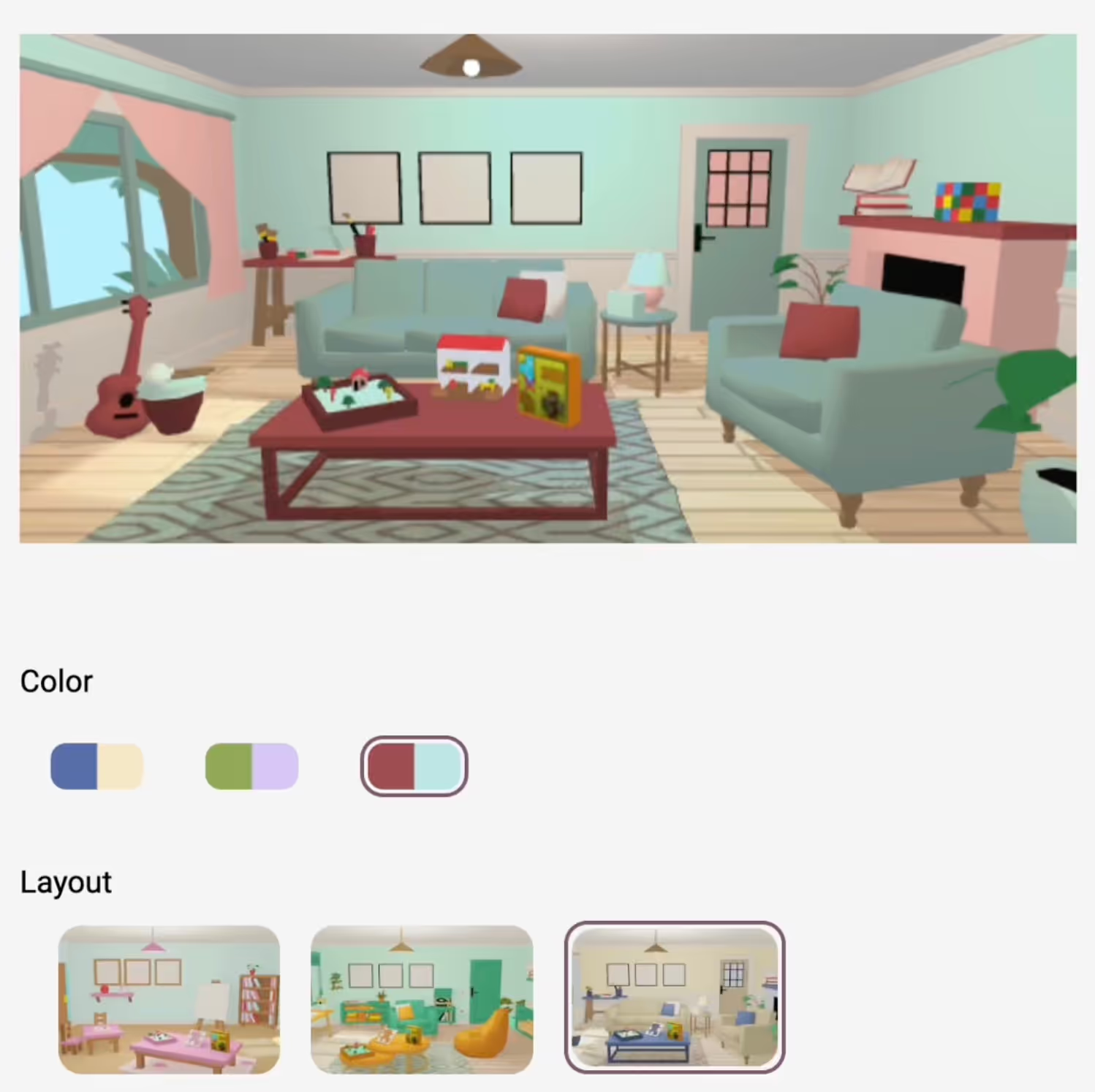Child Room: Designed with vibrant colors and playful furnishing, this room appeals to younger children. It’s a space that feels light, inviting, and energetic, helping to create a sense of warmth and security. The layout is intentionally simple, promoting creativity and imagination during play therapy.
Adolescent Room: This room features a more balanced color palette, catering to teenagers who want a space that feels familiar without being too “childish.” The design leans toward subtle maturity but maintains flexibility for expression. Teenagers can easily customize this space to reflect their interests, passions, and identities.
Adult Room: With a calm, muted aesthetic, the adult room feels more like a living space for reflection and personal growth. The colors and layout are deliberately soothing, helping adults feel at ease while engaging in therapy sessions.
Each playroom starts with a default aesthetic based on the client’s age range, but that’s just the beginning. Clients can personalize their playrooms by uploading photos of themselves, their loved ones, or their pets. This level of customization is key to creating a sense of ownership and belonging within the virtual therapy space. As a therapist, this level of flexibility allows you to encourage your clients to express themselves in ways they may not feel comfortable doing through conversation alone. The visual elements within the playroom help to break down barriers, making the space more accessible and welcoming.

Lorem ipsum dolor sit amet, consectetur adipiscing elit, sed do eiusmod tempor incididunt ut labore et dolore magna aliqua. Ut enim ad minim veniam, quis nostrud exercitation ullamco laboris nisi ut aliquip ex ea commodo consequat. Duis aute irure dolor in reprehenderit in voluptate velit esse cillum dolore eu fugiat nulla pariatur.
Block quote
Ordered list
Unordered list
Bold text
Emphasis
Superscript
Subscript
.avif)